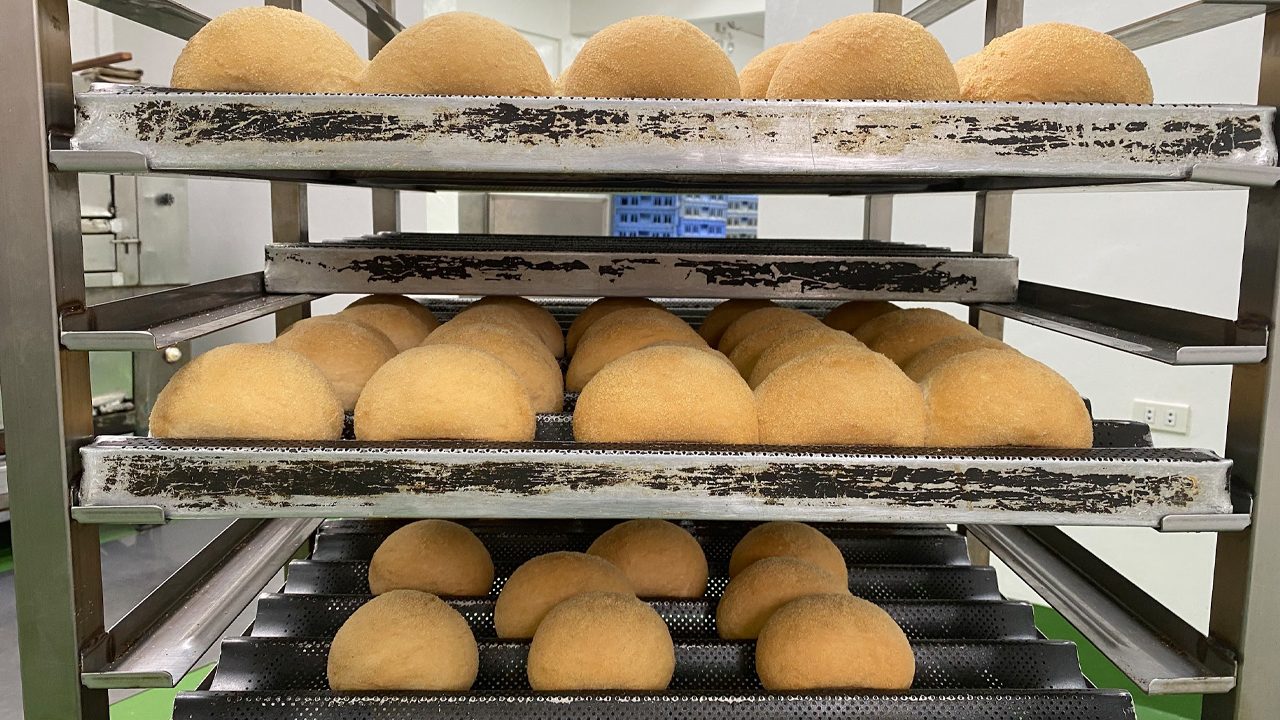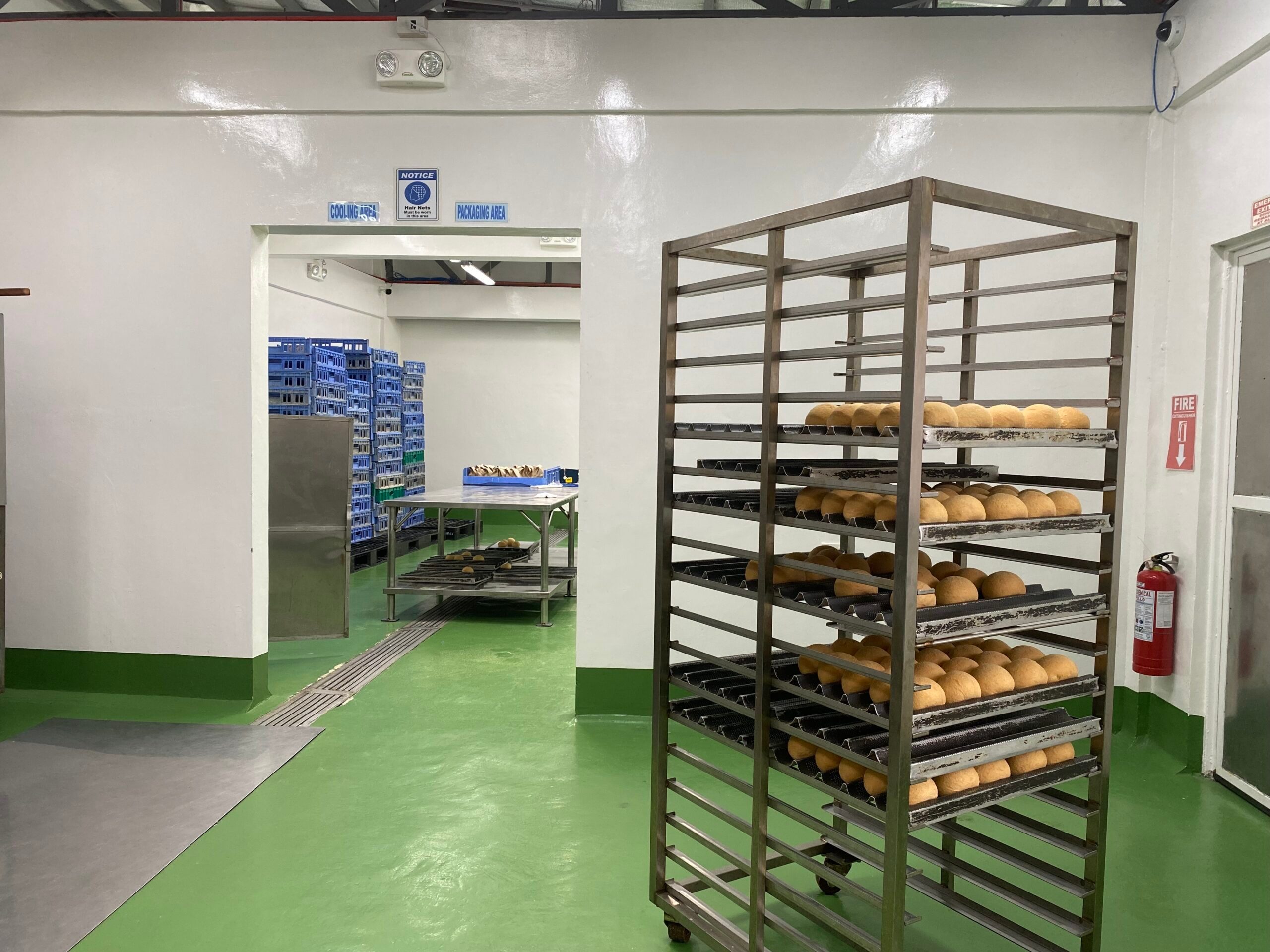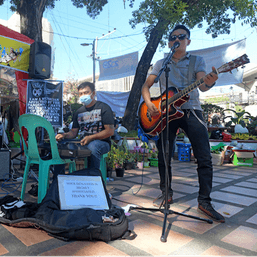SUMMARY
This is AI generated summarization, which may have errors. For context, always refer to the full article.

LAGUNA, Philippines – For Norman Rey Ramos, there is much to be nostalgic about the pan de sal that our lolos and lolas used to buy in the neighborhood panaderias.
Nowadays, most of the bread sold in local bakeries and in supermarkets taste like cake. Too much sugar, flavoring, and vanilla. Pan de sal, which literally translates to “bread of salt,” is a simple bread roll that is a staple in Filipino households.
The slightly sweet but otherwise bland taste of the pan de sal makes it a canvas for the other things that make their way on the breakfast table: instant coffee, liver spread, dried fish, and sinangag.
Ramos wanted to bring back the simplicity of bread, which he believed can be done through sourdough fermentation, and an ancient process that improves the flavor and texture of the bread.
These things, basic as they sound when talking about food and pastries, are what’s missing in the bread we see on the market today, according to Ramos.
The rising prices of ingredients and the fast-paced production have made many bakeries more reliant on instant yeasts to make the bread rise more quickly. There is also the less use of pugon or the traditional wood-fired oven which produces a distinct aroma, taste, and a crusty top different from bread baked in gas ovens.
In general, sourdough does not use yeast to make the bread rise. Rather, it relies on a starter made from flour and water, left to ferment for a few days.
Ramos kept mum about the specifics on how they incorporate sourdough fermentation to their pan de sal and other bread products.
He said it is hard to describe the difference anyway. “‘Pag kumain ka ng tinapay, malalaman.” (If you taste the bread, you will instantly know.)
Asked why there is a need to “bring back” the bread of the past, Ramos said, “It’s part of our own heritage. It’s part of our identity.”
Learning the trade
A pastry chef from Alabang in Muntinlupa, Ramos worked in a five-star hotel in Sydney, Australia, before his hearing disability impeded his career pursuit.
Through his studies and work experience abroad, Ramos gained insights on how to bring back fermentation in commercial bread making.
Even when he was still in Sydney, he began conceptualizing the bakery he dreamed of establishing once he returns to the Philippines. He came up with the name “Boy Panadero,” after his father whose moniker is “Boy.”
In 2013, he established the bread business. Ramos said that while he was just dipping his hands in the business side of the industry, they put up stores in the towns of Makiling and Cabuyao, and San Pedro City in the province of Laguna.
Bread in the time of COVID-19
In 2019, Ramos’ father saw a small print ad in a broadsheet about the Department of Science and Technology’s (DOST) program supporting micro, small, and medium enterprises in sectors like food processing, furniture, and horticulture.
As they were arranging requirements, the pandemic hit. It stalled their application process to DOST’s program.
But their business boomed when the pandemic substantially increased the demand for food delivery services. The lockdown inspired a renewed fascination with many domestic chores that people usually do not have the time for such as baking and trying out all sorts of bread like sourdough.
“Na-capture namin ang buong Ayala Alabang,” said Ramos. (We captured the market of Ayala Alabang.)
Now a considerable time has passed since the lockdown and the delivery business expanded. Inside their bakery in Calamba City in Laguna, new equipment acquired with the help of DOST’s program makes their production larger.
Racks of trays contain rows of round pan de sal dusted with breadcrumbs on top – quite different from the classic ones that are oval-shaped and crusty. But one piece of pan de sal is already a mouthful, its texture packed but airy. There is a hint of sweetness, but nothing too much. There is still room for craving for a strong cup of coffee.

The new rotary rack oven can churn out 900 pieces of pan de sal in 16 minutes, compared to the 75 pieces that come out in 26 minutes from the traditional oven.
With this fusion of old methods with new technologies, Ramos was convinced that it was possible to spark nostalgia to a bigger public.
“Pwede pala ibalik ‘yung tinapay natin ng nakaraan using modern technologies,” he said. (It was possible to bring back the bread of the past using modern technologies.)
According to Ramos, they are only waiting for the go signal from the Food and Drug Administration to start distributing in supermarkets. In the meantime, their bread products can be found in many parts of Laguna and Metro Manila.
In the near future, this is what Ramos hopes to see: Filipinos eating better bread, hopefully accompanied with a cup of coffee that are both locally-sourced. – Rappler.com
Add a comment
How does this make you feel?











![[In This Economy] Why we need to stop the proposed Laguna de Bay expressway](https://www.rappler.com/tachyon/2024/06/Why-we-need-to-stop-Laguna-de-bay-expressway-June-28-2024.jpg?resize=257%2C257&crop=458px%2C0px%2C720px%2C720px)


There are no comments yet. Add your comment to start the conversation.